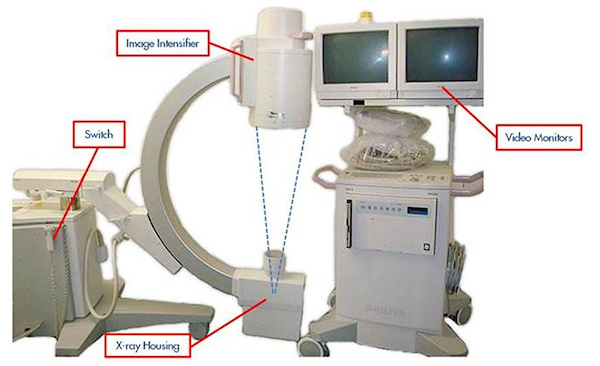Answer to Question #11588 Submitted to "Ask the Experts"
Category: Medical and Dental Patient Issues — Worker Issues
The following question was answered by an expert in the appropriate field:
I'm scared and concerned so please answer my question. I'm a medical student and yesterday was my first day in the orthopedics operating theatre. My friends and I went into a room where an operation was being carried out and stood there observing for 15–20 minutes. Another friend came and told us the image intensifier might be working and we might have been exposed to radiation. We went out immediately. I'm not sure if the machine was actually working at that time but it might have been. We were not wearing any protection at all. Nobody in the operation theatre told us to leave, there were no danger signs anywhere.
My question is, if the image intensifier was on, how much danger am I in? I was not wearing any protection and I'm very scared and can't stop thinking about it. Is this one-time exposure going to give us cancer?
It sounds as if your friend who told you "the image intensifier might be working" and that you had "been exposed to radiation" was misinformed, or worse, was trying to scare you. Let's talk a little bit about the C-arm fluoroscope, how it works, and exposures from it.
For purposes of this discussion, the following components of a C-arm fluoroscope will be considered:
- Image intensifier.
- X-ray tube housing.
- Video monitors.
- Control switch.

The source of x-ray radiation is the x-ray tube in the x-ray housing. X rays leave the housing, pass through the patient, and enter the image intensifier. The image intensifier converts the x-ray information into a video image which is then displayed on the video monitor. The image intensifier does not generate x rays. It is, rather, a sensitive and sophisticated radiation detector.
There are numerous safety features designed into C-arm fluoroscopic units. The x-ray beam (represented by the dotted blue lines above) is cone shaped with the diameter at the image intensifier smaller than the diameter of the image intensifier itself. In other words, the image intensifier entirely intercepts the x-ray beam. The image intensifier is shielded both to reduce stray radiation from entering and affecting the image it creates and to reduce the intensity of the x-ray beam entering it. (In shielding terminology, the image intensifier acts as a primary barrier, just like the lead in the walls of a radiography room.) In fact, when the C-arm is in the lateral position you would get less radiation standing behind the image intensifier than standing behind the x-ray housing (the male doctor is more exposed than the female doctor in the cartoon below).

X rays are generated only when the switch is depressed. And the switch is a "dead-man" switch, which means that someone must be actively depressing it for x rays to be generated. Most C-arm fluoroscopic units have a "last image hold" feature. This means that the monitor may show a picture (or even a multisecond loop) of previously recorded images even though x rays are not being generated. So even if you saw an x-ray image on the monitor, that does not necessarily mean that x rays were being generated.
Because the beam is going through the patient, the patient receives the largest radiation exposure. There are two sources of radiation that can result in exposures to people in the room, albeit much lower exposures than the patient receives. Some radiation escapes the sides or back of the x-ray tube housing (99.99% or more might be stopped, but that means that some small fraction passes through the housing). Also, a small fraction of radiation that enters the patient is scattered; that is, the radiation leaves the patient going in a direction other than towards the image intensifier.
Generally, if you are standing 2 meters (m) away from the part of the patient being examined and the x-ray housing, your exposure is minimal. If you are standing closer on a regular basis, the use of protective apparel and personal monitoring may be warranted.
Your radiation dose from being in the room for a single procedure would not increase your cancer risk in any measurable way.
Kent Lambert, CHP, FHPS


